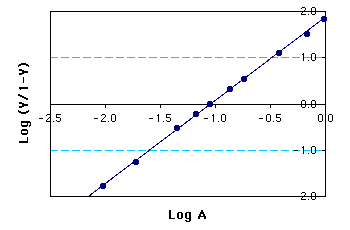Cooperative Binding: Answer Sheet Example
| The protein concentration = (0.4 mg/ml)/(40,000 g/mol) = 10 mM. The last four columns were calculated using equations from the Cooperative Binding page. |
Graph of the calculated results: The Kd = 0.10 mM. The Hill Coefficient, nH = 1.8.
Compare the above graph to the Hill plot for non-cooperative binding with the same Kd. |